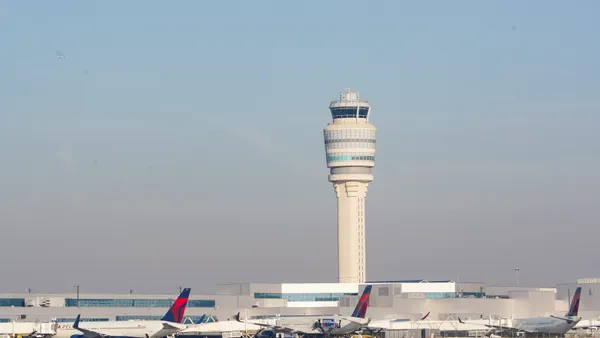Dive Brief:
- The Georgia Department of Transportation has launched an initiative to use smart technology to gather and analyze traffic data on a busy stretch of road in downtown Atlanta, according to the The Atlanta Journal-Constitution.
- In addition to autonomous vehicle tests, the North Avenue Smart Corridor Project uses adaptive traffic signals and high-definition video surveillance to improve transit flow, as well as technology that gives emergency vehicles priority.
- The $3 million project spans 2.3 miles of North Avenue connecting Coca-Cola's headquarters and Georgia Tech University to Ponce City Market.
Dive Insight:
More cities are setting up small-scale tests for connected and autonomous vehicles (CAV) and similar technology as state and federal officials work out a more consistent set of rules guiding its use.
The city of Akron, OH, has teamed up with local, state and federal agencies to add fiber optic cables and other technological infrastructure to support communication between vehicles, pedestrians and city systems.
Meanwhile, Kansas City, MO–based startup Integrated Roadways is planning two smart road pilots — one in Kansas City and another in a yet-to-be determined city outside the state. As in Akron, the company’s goal is to improve traffic flow and increase internet capacity for the surrounding areas.
Including autonomous vehicles alongside human-operated ones can significantly improve traffic flow, according to a study earlier this year from the National Science Foundation’s Cyber-Physical Systems and university researchers. The findings were based on tests completed on a track in Tucson, AZ, featuring one autonomous car driving alongside 20 others driven by humans. Managing how fast the autonomous car traveled, researchers found, had a positive impact on regulating the speed of the other cars.
Beyond speed, government officials and their private-sector and academic partners face a number of hurdles to seeing CAV on the roads full-stop. Legislation in the House, which is expected to be considered alongside the Senate’s own related bill, is a major step toward achieving the consistent regulations required to facilitate nationwide adoption.
In the meantime, a set of voluntary guidelines for CAV use released earlier this month by the U.S. Department of Transportation gives automakers and other tech companies a sense of the expected limitations of testing applications. The rules update a similar set released last year by the Obama administration and are expected to be updated in the future as CAV technology evolves. The guidelines also help to illuminate the role of states in the eventual regulatory process, as many already have their own CAV rules.














